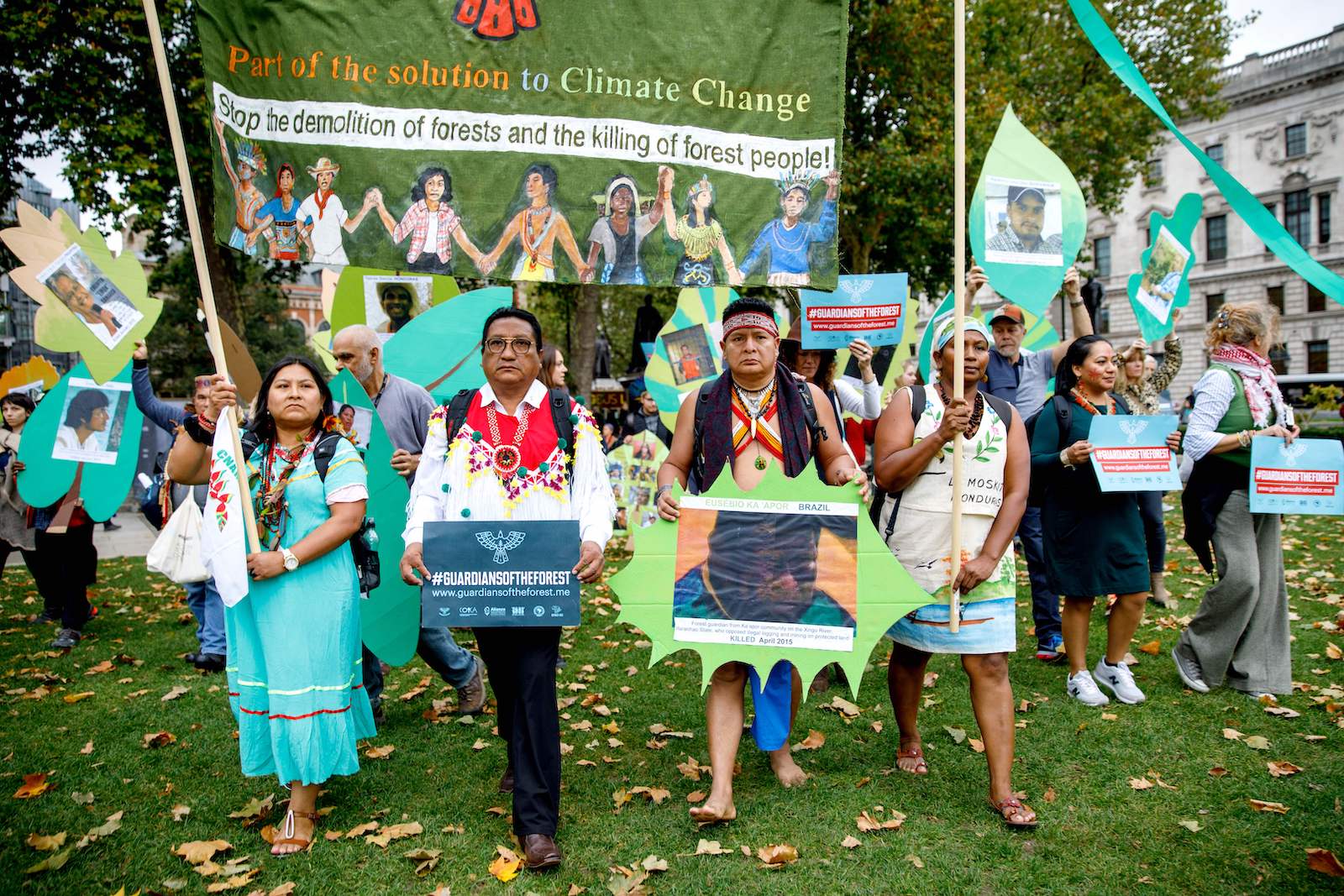The General Assembly of the International Union for Conservation of Nature, or IUCN, will gather next week to shape a collective strategy to protect the world’s increasingly at-risk flora and fauna. Representatives from more than 217 nations and territories, 18,000 experts, and 1,400 NGOs, businesses, and scientific institutions will vote on recommendations and motions that will mobilize money and build political momentum for global conservation efforts. And now, for the first time in the IUCN’s 73-year history, Indigenous peoples will finally get a seat at the table.
Twenty-three Indigenous organizations, representing groups from every continent, will join this year’s IUCN’s General Assembly as members, meaning that they can introduce motions; vote for or against resolutions and recommendations; and participate in working groups.
“We’ve been fighting for 40 years to be included in the U.N.’s international system and other international spaces to defend the identity, culture, and lands of Indigenous peoples,” said José Gregorio Diaz Mirabal, who leads the Coordinator of Indigenous Organizations of the Amazon River Basin, or COICA, a group that congregates the biggest national Indigenous associations from nine Amazonian countries. “[We know that] if we don’t go [to international meetings], solutions will not come to us.”
In addition to COICA, other new Indigenous members to the IUCN include the Highlanders Association from Cambodia, the Indigenous Peoples of Africa Coordinating Committee, and the Inuit Circumpolar Council, from Canada, among others.
COICA plans to introduce a new and urgent motion — the main mechanism to influence IUCN’s policy — to the General Assembly on Friday, proposing a target of preserving 80 percent of the Amazon rainforest by 2025. The plan, which they have called “Amazonia por la Vida,” or Amazonia for life, requires that the region’s governments legally recognize as autonomous 100 percent of Indigenous lands in the Amazon, ban deforestation-linked activities, and suspend all future licenses for mining, oil extraction, and other extractive industries in the rainforest. The motion also proposes that banks and financing partners should prioritize funding for projects that include Indigenous peoples in the region, and respect their human rights.
In addition to participating in the General Assembly, Indigenous groups will lead the World Summit of Indigenous Peoples and Nature on September 3, a side event to the main IUCN conference in Marseille, France that will exclusively highlight the contributions of Indigenous peoples to conservation and climate goals. They will also potentially meet with France’s President Emmanuel Macron, and with United States and European Union climate and biodiversity officials.
Getting Indigenous groups a seat at the IUCN table has been a decades-long battle, explains Kankana-ey Igorot peoples activist Victoria Tauli-Corpuz. Previous to this year’s conference, Indigenous peoples could technically join the IUCN as members under the category of NGOs. But the distinction irked many Indigenous leaders. “They are not just simply NGOs,” Tauli-Corpuz explained. “They are peoples, they are nations, and of course, they are communities.” As a consequence, they stayed out of the member’s assembly, participating only in the event’s forums and exhibitions. (COICA enrolled as an “environmental actor” in 2010, but never participated).
The turning point came in 2016, during the IUCN Assembly in Hawaii. For years, Indigenous peoples had been raising concerns about how conservation areas, often supported by the IUCN and other conservation organizations, were violating their rights. That year, Tauli-Corpuz, who was then the UN Special Rapporteur on the Rights of Indigenous Peoples, sat in front of the Assembly and presented a report detailing the ways in which many conservation areas across the world were harming Indigenous communities, from expropriating their land — forcefully displacing them — to denying them self-governance, access to livelihoods, and causing them to lose cultural and spiritual sites.
“[We wanted to tell the IUCN members] ‘We have lived in these territories, these ecosystems since time immemorial,” Tauli-Corpuz said. “And yet our knowledge is not really taken into account in a very serious manner. And our governance over our ecosystems is also not supported by state laws or by the conservation organizations.”
Despite occupying just 20 percent of land worldwide, Indigenous communities live in areas encompassing 80 percent of the earth’s biodiversity. Researchers have found that in certain regions, like the Amazon, Indigenous peoples are more effective than governments in protecting natural resources.
Yet despite this data, Indigenous groups only administer 5 percent of the world’s protected areas, and receive less than 1 percent of climate funding.
On August 9, 2016, after Tauli-Corpuz’s testimony, the IUCN Assembly approved the motion to create a membership category for Indigenous peoples. The decision was history-making: It was “the first time in IUCN’s history that a new membership category has been established,” Aroha Te Pareake Mead, chair of IUCN’s Commission on Environmental, Economic and Social Policy, said in a statement at the time.
As soon as they heard the announcement, Indigenous communities in the Amazon started working towards becoming members, Diaz Mirabal said. Last year, they joined the Congress of Protected Areas of the Amazon Basin and drafted the plan with international environmental organizations. This is a proposal, he said, that unlike the Paris Agreement and international agreements, comes from the communities themselves, addressing the key issues that defenders need to protect biodiversity.
“We often say that governments negotiate [green funds] over Indigenous lands with banks, with other governments on the table, and we’re often under the table trying to get whatever scraps fall,” he said. “But no more. We want to be equal partners.”



